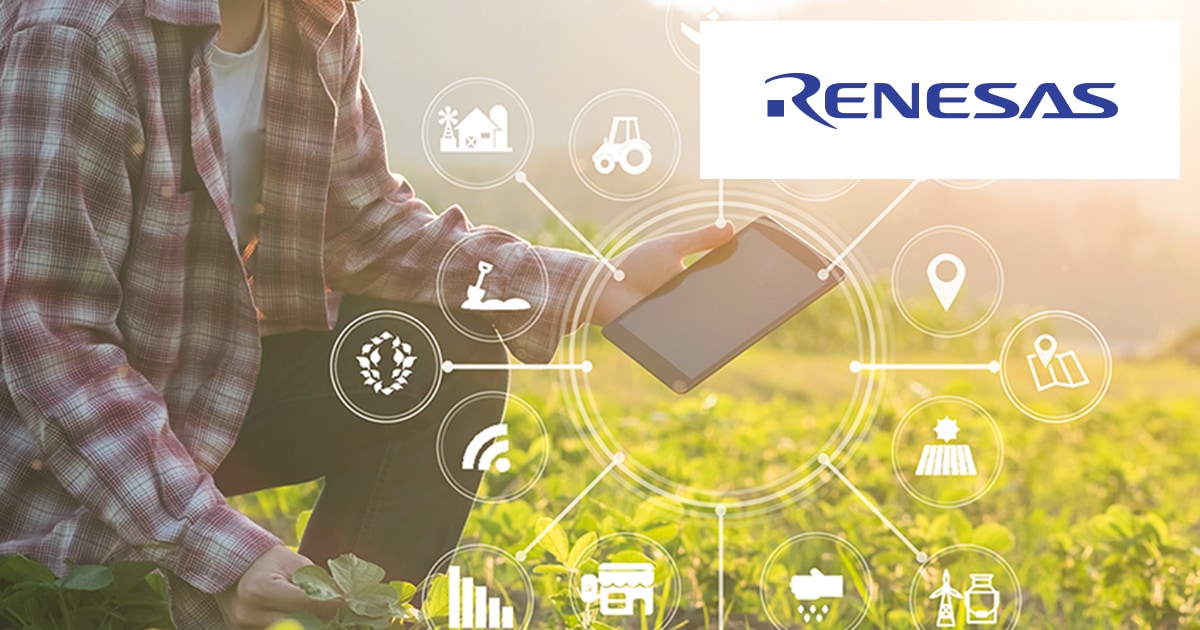- HOME
- Application Examples
- Renesas Electronics
Renesas Electronics
Energy Harvesting Combines with Agricultural Sensors to Make Smart Agriculture a RealityThe search for a solution that will reliably power a system of agricultural sensors

Background
Japan’s aging population and declining birth rate have created a need for more state-of-the-art “smart agriculture” that makes use of the latest technology to enable more efficient agriculture that is less labor-intensive. Examples of smart agriculture include the use and analysis of sensing data to accurately project crop growth and disease. In response to the smart agriculture trend, major semiconductor manufacturer Renesas Electronics ( hereinafter Renesas ) was developing an agricultural sensor system that leveraged Renesas’ range of semiconductor devices.
Problems
Proprietary Microcontroller Solves Power Supply Issues
In order for sensing data to be utilized effectively, farmers need to be able to position agriculture sensors freely around their farms. However, the supply of power to these sensors was an issue. Running wires is both costly and troublesome, and single-use batteries need to be replaced regularly. These issues led Renesas to develop a wireless sensor system that obtains its power through energy harvesting by incorporating the RE family of ultra-low power microcontrollers (MCUs) enabled by Renesas’ proprietary silicon-on-thin-buried-oxide (SOTB™) technology*. This way, the minuscule currents yielded through energy-harvesting can be used in the agricultural environment to measure attributes such as temperature, humidity, and soil moisture and transmit this information over long distances using wireless communications.
*SOTB Process: a proprietary transistor technology of Renesas that incorporates silicon on insulator (SOI) technology. SOTB is a registered trademark of Renesas in the US and in other jurisdictions.
Finding a Reliable Energy Storage Device Suitable for Smart Agriculture
The use of energy harvesting technology posed another challenge, as fluctuations in output resulting from changes in the weather tend to render the sensor system unstable. Renesas therefore needed a device to temporarily store the power obtained from energy harvesting. While Renesas initially thought of using capacitors, their high self-discharge rates and inability to store energy for extended periods counted against them. Traditional rechargeable batteries, on the other hand, are able to store energy for a long period of time, but their high internal resistance and low output current means that they cannot be used to power wireless communications or store minuscule currents. They also have short lifetime, and are costly when used with systems that comprise a large number of sensors. In order to create a smart agriculture system that is both stable and maintenance-free, Renesas therefore needed a completely new kind of power storage device that solved all these issues.
Main Issues
Power sourced from energy harvesting tends to fluctuate with the weather, thereby making the sensor system unstable.
While Renesas considered traditional solutions, capacitors have a high self-discharge rate and are unable to store a charge for extended periods of time.
Traditional rechargeable cells are able to store energy for long periods of time, but their high internal resistance and low output current means that they cannot be used to power wireless communications or store minuscule currents. Such rechargeable cells also suffer from short battery life. and are costly when used with systems that comprise a large number of sensors.
